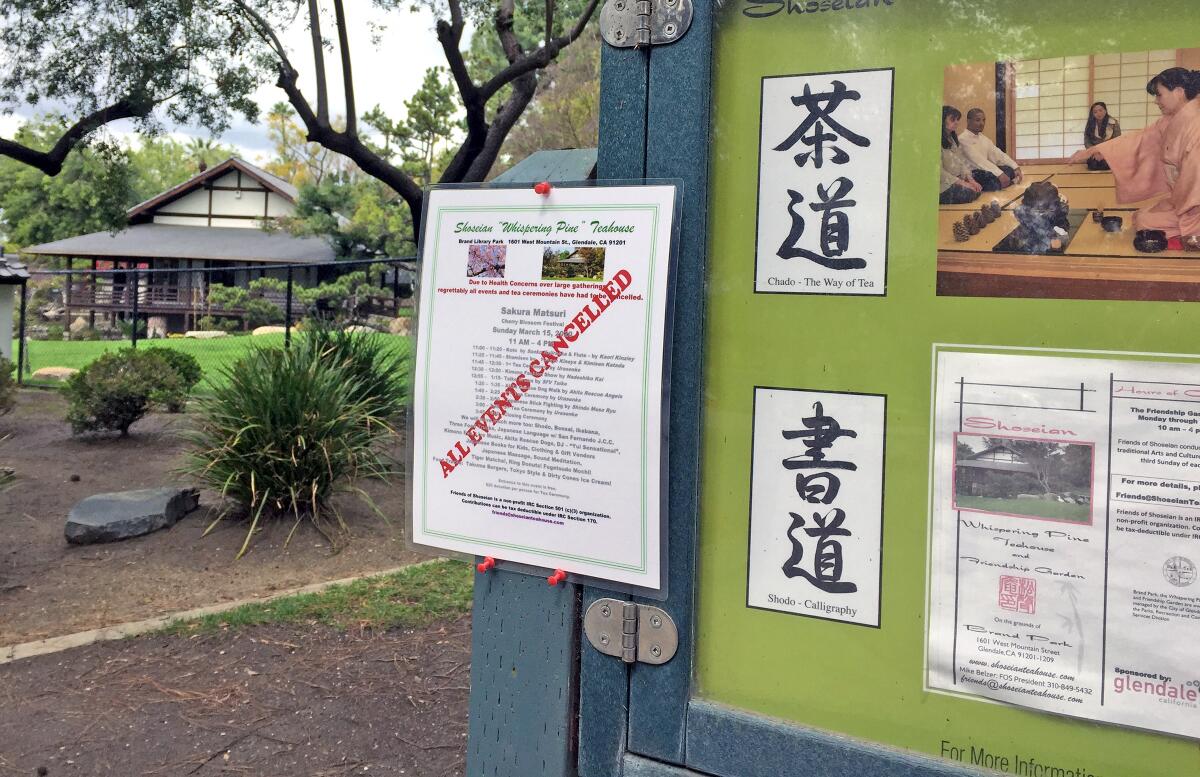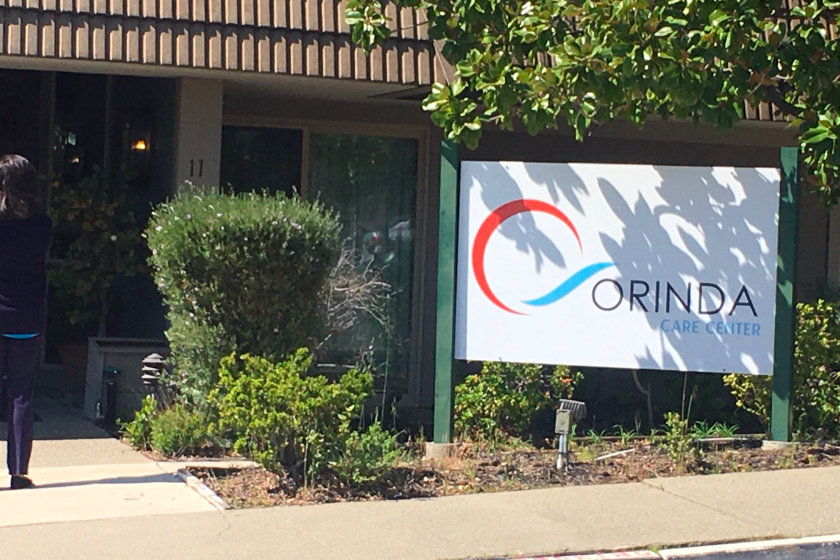Verdugo Views: Current pandemic recalls previous efforts to isolate during health crises

- Share via
Last Sunday, my husband Glenn and I walked up to Brand Park. Everything appeared normal; the parking spaces were nearly full, hikers were coming down from the trails, and there was a pick-up baseball game going on.
But then, we walked by the Japanese teahouse and saw a sign that the cherry blossom festival scheduled for that day had been canceled.
It was a quick reminder of the anxious times we are experiencing. And it reminded me that Glendalians went through a somewhat similar experience 102 years ago, when the dreaded Spanish influenza reached Glendale. It had begun earlier in the year, and was spread, in part, through wartime troop movements around the world.
In late September of 1918, a traveler from Chicago brought the virus to this area; within a few days, the Glendale Evening News published an order from Glendale’s health officer to close schools, churches, theaters and all public places in our town, along with guidelines from the California State Board of Health to go to bed if symptoms such as a chill, headache, unusual tiredness or fever were present. Those caring for the sick were instructed to wear gauze masks available from the Red Cross.
Despite these precautions, there were several deaths locally, as noted in the Verdugo Views column of April 11, 2008, 90 years after the epidemic.
Another dreaded virus, polio, first appeared in the United States in the mid 1800s. A 1916 epidemic (two years before the Spanish flu outbreak) caused widespread panic. New York City was particularly hard hit. “Thousands fled the city to nearby mountain resorts; movie theaters were closed, meetings were canceled, public gatherings were almost nonexistent, and children were warned not to drink from water fountains, and told to avoid amusement parks, swimming pools and beaches,” according to Wikipedia.
Polio reappeared randomly in the U.S. for many summers after that. It was in Southern California in 1934, at a time when those suspected of being infected were admitted through the communicable disease admitting room. Definite cases were segregated and all suspected cases held for 10 days of observation. That June, during the worst of it, patients on stretchers and in cars waited for admission while doctors, nurses and other medical related workers worked overtime, often for 24 to 48 hours, according to “The 1934 Epidemic of Poliomyelitis in Southern California,” found online.
Rennie Hunter Walz, who attended Ida Reed McCarthy nursery school at the corner of Pacific Avenue and Stocker Street when she was young, recalled one summer in the late 1940s when polio fears were high. Her mother kept her home and inside all summer as a precaution. “My mom and I had lots of tea parties, read lots of books, played games, and I am sure that I ‘helped’ my mother with whatever she was doing. The neighbor kids were home, too; I don’t know if we got to play together or not. Maybe we kept our ‘social distancing’ and visited across the fence,” Walz said.
In 1948, polio hit Wisconsin and greatly impacted a young girl named Nancy. Although she lived far from Glendale at the time, her experience is worth repeating. In 1986, she wrote to the Los Angeles Times that her father died during that epidemic and related the isolation that followed.
“The milkman left a note saying he could not take our empty milk bottles. The city Health Department notified us our trash was to be kept separate from the rest of the apartment buildings as it would require a special pickup. My sister, 3 years old, and I were quarantined — complete with signs on the door — in a three-room apartment,” — March 1, 1986, Los Angeles Times.
More recently, the Asian flu, an avian influenza that originated in China, reached the United States in June 1956. The death toll in the United States was approximately 69,800, according to Wikipedia.
I became aware of the Asian flu after writing another column concerning the 100th year since the Spanish flu epidemic began. That column ran on Feb. 10, 2018, and a few days later, Stuart Ray emailed that he had gotten the Asian flu. “It seemed to hit Glendale first and then Burbank, where I lived then. It was considered to be only behind 1918 in its impact,” he wrote.

